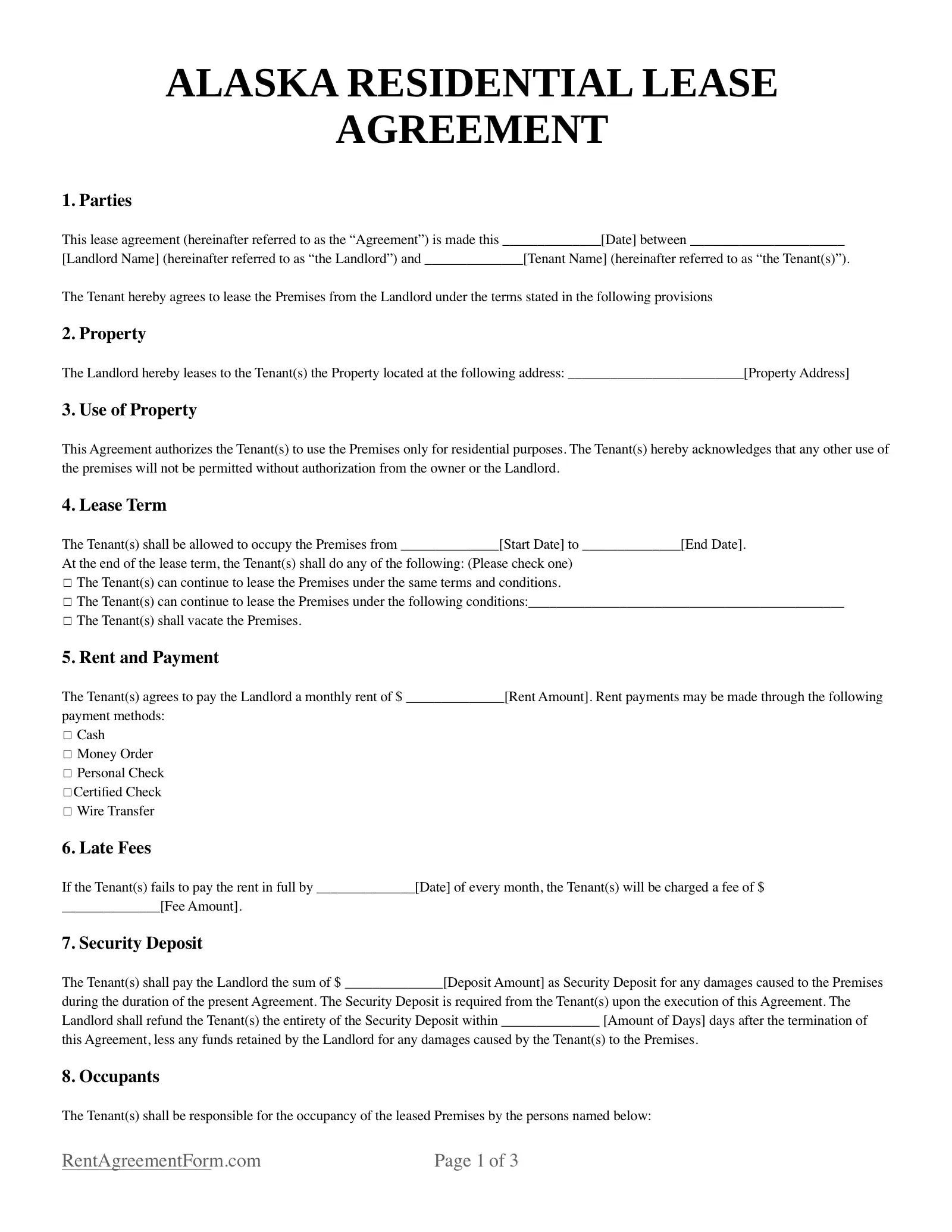Alaska Residential Lease Agreement Form
Alaska is a place of adventure with its vast natural resources. Residents enjoy the peace and isolation, too. If you intend to rent real estate in the Last Frontier, you need an Alaska residential lease agreement form.
A lease agreement is a contract between the landlord and tenant that outlines the terms of the rental of a room, house, or residential unit of a multi-family building. The standard form contains the address of the property and a brief description.
Some basic personal information of the tenant is also stated, along with their responsibilities, including taking care of the property. In some cases, the lease will stipulate that the tenant cannot have loud gatherings and other activities that may disrupt the neighbors.
The form also notes some of the landlord's responsibilities, such as ensuring the property is safe for occupancy and repairing any structural and physical damage. More importantly, the document will indicate the rent amount and the due date.
Before you get a lease agreement, potential tenants send over a rental application form, which is the document that signifies the tenant’s interest in the property. When approved, the landlord and tenant can proceed with the lease agreement form.

Required Disclosures
- Lead-Based Paint Disclosure - Realtors and Alaska landlords must inform property buyers and renters if a subject home was built before 1978 and has lead-based paint. In such cases, they are also required to furnish buyers and tenants with educational materials about the dangers of lead-based paint.
- Property Manager Disclosure - The tenant has the right to know the names of the property manager, property owner, and any other parties who may act on their behalf. The landlord must provide the tenant with this information in writing.
Rent Grace Period
There is no statute on the rent grace period in Alaska. If the landlord and tenant agree on a grace period, it must be in the residential lease agreement form.
Since there is no provision, a day after the due date is already considered a late payment. But if the landlord wants to file an eviction notice, they must give the tenant a seven-day notice to pay.
Security Deposits
Alaska landlords may ask for security deposits, but they must not be more than the equivalent of two months’ rent unless the rental unit is valued at more than $2,000.
The landlord can only use the security deposit to cover expenses due to damage to the property or any type of break on the structure. If the tenant has unpaid rent or incurs other charges, the landlord may deduct the amount from the security deposit.
However, if the tenant decides on early termination of the lease, the landlord has the right to deduct a justifiable amount from the security deposit for non-compliance with the contract.
Alaska law states: “The accrued rent and damages must be itemized by the landlord in a written notice mailed to the tenant’s last known address within the time limit prescribed, together with the amount due to the tenant” (Alaska Uniform Residential Landlord & Tenant Act § 34.03.070).
The landlord has 30 days to refund the tenant with the security deposit or its remaining balance.